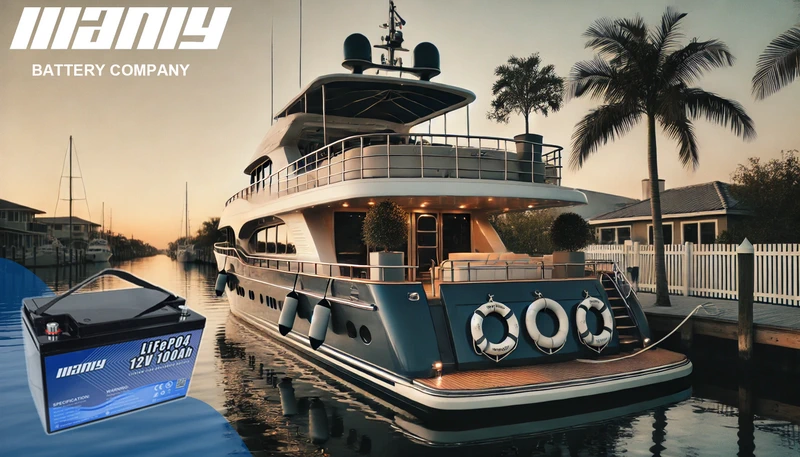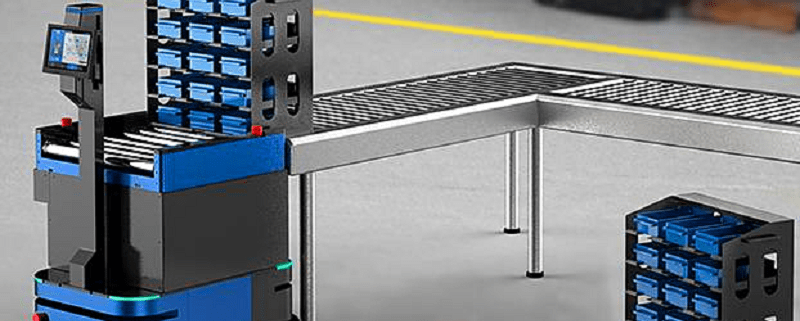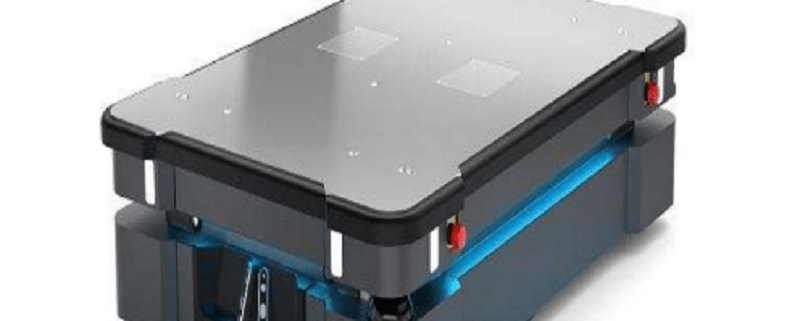What Type of Battery is a Marine Battery? A Detailed Breakdown
Table of Contents
- What Type of Battery is a Marine Battery? A Detailed Breakdown
- What is a Marine Battery?
- Different Types of Marine Batteries and Their Features
- The Best Choice: LiFePO4 Batteries for Marine Use
- Why LiFePO4 Batteries Are the Best Marine Batteries?
- Conclusion
- FAQ
- Hot Search
- What are the advantages of AGV
- What is AGV
- Ireland Customer 300pcs 12V 38Ah Solar Battery Tested Has Been Completed
Maintaining a consistent and dependable boating experience depends on choosing the right marine battery. Whether you use a trolling motor, start your engine, or run electronics, the appropriate battery type will make all the difference. The several choices for batteries make many sailors find it difficult to choose the right one.
This article will break apart lead-acid, AGM, gel, and LiFePO4 batteries as well as other types of marine batteries. You will learn every type in great depth, including its benefits, drawbacks, and optimal uses. By the conclusion, you will understand the reason LiFePO4 batteries are the best fit for marine applications.
What is a Marine Battery?
Designed especially to withstand adverse sea conditions, a marine battery is Unlike automobile batteries, which only provide short bursts of electricity to start an engine, marine batteries must deliver constant power for lengthy durations while tolerating vibrations, dampness, and temperature variations.
- Usually driven by its intended use, marine batteries are categorized:
- The starting battery runs the boat motor. It gives a brief, sharp boost but lacks long-term vitality.
- Deep-cycle batteries run constantly for lights, fish finders, and trolling motors among other equipment.
- A dual-purpose battery sometimes performs worse than dedicated beginning and deep cycle batteries, even if it aims to combine two uses.
These classification indicate the use of a marine battery, although the most important factor influencing battery performance is battery chemistry. Chemistry of a battery determines its general performance, longevity, efficiency, and maintenance requirements.
Different Types of Marine Batteries and Their Features
The several kinds of marine batteries are listed below, together with their characteristics:
Lead-Acid Marine Batteries
Lead-acid batteries have been used in marine conditions as they have been rather competitively priced and widely available for decades. These batteries chemically react with lead plates and sulphuric acid to generate power.
Flooded Lead-Acid (FLA) Batteries
Flooded lead-acid batteries are the most classic form. They demand consistent maintenance, including topped off distilled water. They are heavy, require ventilation, have a shorter lifetime than other battery types even if they are economically priced.
Sealed Lead-Acid Batteries
Lead-acid batteries sealed eliminate maintenance needs and are spill-proof. Two most widely used variants that improve performance over typical flooded lead-acid batteries are AGM (absorbed glass mat) batteries and gel batteries.
Advantages of Lead-Acid Marine Batteries
Lead-acid batteries are reasonably cheap and rather numerous. Their great starting current makes them worth using for engine cranking.
Disadvantages of Lead-Acid Marine Batteries
Lead-acid batteries need regular maintenance, weigh a lot, and charge slowly. Usually running for two to four years, their lifetime is short; they break down upon discharge below 50% capacity.
AGM (Absorbed Glass Mat) Marine Batteries
AGM batteries are spill-proof and maintenance-free by absorbing the electrolyte using fiberglass mats, therefore improving traditional lead-acid designs.
How do AGM Batteries Work?
By immobilising the electrolyte inside the glass mat, AGM batteries reduce the possibility of leaking and hence maximise power efficiency. Since this structure lets for better resistance to vibrations and faster charging periods, AGM batteries are a more durable replacement for flooded lead-acid batteries.
Advantages of AGM Marine Batteries
Zero maintenance and faster charging than other lead-acid models describe AGM batteries. Their lifetime is between three and six years, and they have more resistance to deep discharges.
Disadvantages of AGM Marine Batteries
AGM batteries remain heavier than lithium alternatives even with their superior performance. On a tight budget, they also appeal less to boaters since they cost more than flooded lead-acid batteries.
Gel Marine Batteries
Gel batteries use liquid electrolytes from a silica-based gel. Less leaks and greater deep discharge performance are made possible by this chemical composition.
How do Gel Batteries Work?
The gel-based electrolyte lowers chemical reactions, therefore reducing the possibility of overcharging or deep discharge. Applications needing constant, long-term power will find ideal use for these batteries.
Advantages of Gel Marine Batteries
Gel batteries resist high temperatures, maintain a longer lifetime than flooded lead-acid batteries, and require no maintenance.
Disadvantages of Gel Marine Batteries
The slow charging rate of gel batteries is its biggest drawback. Furthermore expensive than AGM and flooded lead-acid batteries are they are. Less forgiving than other battery kinds, overcharging can damage a battery permanently.
The Best Choice: LiFePO4 Batteries for Marine Use
The most intelligent and powerful marine batteries are LiFePO4 (Lithium Iron Phosphate). Unlike lead-acid batteries, which rely on chemical interactions between lead and acid, they offer constant and dependable power by means of lithium-ion technology.
Why LiFePO4 Batteries are Superior?
Among their most important benefits are LiFePO4 batteries’ extended lifespan. Lead-acid batteries run two to six years; LiFePO4 batteries can run ten years or more. Since they weigh up to 70% less than lead-acid batteries and are more easily handled, they also greatly improve boat performance.
Charging time offers still another major advantage. Five times faster charging of LiFePO4 batteries than with lead-acid batteries Unlike lead-acid batteries, which have to be kept above 50% charge, they also enable total discharges free from battery damage.
Are There Any Drawbacks to LiFePO4 Batteries?
The sole negative of LiFePO4 batteries is their starting cost. For seasoned sailors, however, they are the most affordable choice because of their long lifetime, fast charge times, and low maintenance needs.
Why LiFePO4 Batteries Are the Best Marine Batteries?
LiFePO4 batteries have long-term benefits above all other battery models, even if their initial expense makes many sailors unwilling to switch. Boats carrying LiFePO4 batteries had 30% longer running lifetime on electronic systems and trolling motors, according a study by marine engineers.
Savings in weight also improve performance. LiFePO4 technology lets a boat greatly reduce the weight of its battery, therefore enhancing fuel economy and general maneuverability. Boaters looking for dependability, fast charging, and long-lasting performance would best invest in LiFePO4 batteries.
Conclusion
The perfect sailing voyage depends on selecting the right marine battery. Though lead-acid, AGM, and gel batteries are still somewhat popular, none give the efficiency, lifetime, and long-term savings LiFePO4 batteries offer.
LiFePO4 batteries from MANLY Battery provide the finest answer if you want a dependable and high-performance marine battery. Their innovative lithium technology guarantees exceptional energy economy, therefore assuring that your boat keeps running without the trouble of regular replacements.
For premium-quality marine batteries, visit MANLY Battery today and experience the next generation of marine power solutions.
FAQ
1. Is a deep cycle battery the same as a marine battery?
Let’s clarify: a deep cycle battery and a marine battery aren’t the same, although they have similarities. Here’s why:
A deep cycle battery provides a steady power flow over an extended period. It’s designed for applications that need consistent energy, like golf carts, RVs, or renewable energy systems. These batteries are built to handle repeated discharges and recharges without losing performance.
On the other hand, a marine battery is specifically made for boats. However, marine batteries come in two types: starting and deep cycle. A starting battery delivers a quick surge of power to start the engine, while a deep cycle marine battery powers your boat’s electronics and other devices.
So, while some marine batteries are deep cycle, not all deep cycle batteries work as marine batteries. If you’re choosing a battery for your boat, ensure it’s designed for marine use to get the most reliable power.
2. What are the three types of marine batteries?
Marine batteries come in three main types, each serving a different purpose. Understanding their roles helps you pick the right one for your boat:
- Starting Batteries: Starting batteries provide a quick burst of power to start your engine. They’re all about delivering a high-energy jolt for a short time. These batteries are not designed to power other devices, so they focus only on getting your engine running.
- Deep Cycle Batteries: Need power for your boat’s electronics, trolling motor, or other accessories? Deep cycle batteries are your answer. They deliver steady, long-lasting energy and can discharge and recharge multiple times without losing capacity. Perfect for extended trips or when you’re off the grid!
- Dual Purpose Batteries: As the name suggests, dual purpose batteries combine the functions of both starting and deep cycle batteries. They give you enough power to start your engine and supply energy to your accessories. They offer versatility but may not provide as much power as a dedicated starting or deep cycle battery.
Hot Search
Marine Lithium Battery Battery Manufacturer
Hello
Advantages of AGV:
(1) High degree of automation;
It is controlled by computer, electronic control equipment, laser reflector, etc.
When auxiliary materials are needed in a certain part of the workshop, the staff enters relevant information into the computer terminal, and the computer terminal sends the information to the central control room. Professional technicians issue instructions to the computer. With the cooperation of electronic control equipment, this The instruction is finally accepted and executed by the AGV-send the auxiliary materials to the corresponding place.
(2) Charging automation;
When the power of the AGV car is about to run out, it will send a request instruction to the system to request charging (general technicians will set a value in advance), and automatically go to the charging place after the system allows it to “queue” for charging.
In addition, the battery life of the AGV trolley is very long (more than 10 years), and it can work for about 4 hours per 15 minutes of charging.
(3) Beautiful, improve the viewing degree, thereby enhancing the image of the enterprise.
(4) Convenience and reduced floor space; the AGV trolley in the production workshop can shuttle back and forth in each workshop.
In the early days, AGV trolleys could only travel in one direction during automatic operation, so the applicable environment was limited. In order to meet the requirements of industrial production, in recent years, there have been AGV products in foreign countries that can move forward and backward or even travel, forward, reverse, sideways and rotate in all directions during automatic operation. These achievements are attributed to the progress of the walking mechanism.
1. Two-wheel differential traveling mechanism This traveling mechanism has two traveling driving wheels symmetrically arranged on the front and rear centerline, and two supporting wheels are arranged at the vertices of an isosceles triangle with the fulcrum of the two traveling wheels as the base. The trolley relies on both sides of the driving wheel to steer differentially, so there is no need to set a steering wheel. The trolley has simple structure, reliable work and low cost. In the automatic running state, the trolley can move forward and backward, and can make vertical turns with good maneuverability. Compared with the four-wheel walking mechanism trolley with steering wheels, the trolley can be made smaller due to the omission of the steering wheel, which not only saves two driving motors but also saves space. In recent years, the trolley of this kind of organization has been widely used. In order to improve the lateral stability of the car body when driving, the two-wheel differential four-wheel walking mechanism can be improved as follows. The supporting wheels are increased from the original two to four and arranged at the four corners of the chassis of the trolley.
2. Three-wheel walking mechanism The three wheels of the AGV trolley of the three-wheel walking mechanism are respectively arranged on the three vertices of an isosceles triangle. The front wheel is both a steering wheel and a walking driving wheel. The two wheels behind are unpowered supporting wheels. The AGV trolley of the three-wheel traveling mechanism is simple in structure, easy to control, reliable in work, and low in cost. When the car is manual, it can forward, reverse and turn automatically. It can only drive in one direction. When turning, the trajectory of the rear wheel’s midpoint deviates from the track of the guide wire and presents a trailing line.
3. Four-wheel walking mechanism with steering wheel The four-wheel walking mechanism with steering wheel is evolved on the basis of three-wheel walking mechanism, which is equivalent to combining two tricycles together. The two supporting wheels are symmetrically arranged on the center line of the front and rear of the trolley. The front and rear wheels are respectively arranged symmetrically at the vertices of an isosceles triangle with the fulcrums of the two supporting wheels as the base. The front and rear wheels are both steering wheels and walking driving wheels. This kind of AGV trolley can travel in all directions under automatic operation. When turning, the front and rear wheels can track the trajectory of the guide wire. The maneuverability is better than that of the tricycle. It is suitable for narrow aisle work environment.
4. Other forms of walking mechanism In recent years, foreign companies have continuously researched new walking mechanisms. Among them, the symbolic one belongs to the walking organization of Sweden’s Mackanham Company. The running mechanism is novel in design and compact in mechanism. Four driving wheels are arranged on the four corners of the chassis in an articulated form. When running, the steering and speed of the four wheels are controlled separately, and the speed vector synthesis principle is used to realize driving. Later, Japan’s Mitsui Co., Ltd. cooperated with McCannham Company to make improvements on the original basis and launched the Mitsui Mackanham Wheel System, which has improved its performance. This AGV trolley can realize all-round driving.
With the rapid development of logistics systems, the scope of application of AGV is also expanding. AGV systems are researching and designing an unmanned car system solution based on electromagnetic navigation. Through actual hardware experiments, the system can meet the expected design requirements and can be widely used In the fields of industry, military, transportation, electronics, etc., it has good environmental adaptability, strong anti-jamming ability and target recognition ability.
AGV is the abbreviation of (Automated Guided Vehicle), which means “automatically guided transport vehicle”. It is equipped with electromagnetic or optical automatic guidance devices. It can travel along a prescribed guidance path. It has safety protection and various mobility. Carrying function of the transport vehicle.
Automated Guided Vehicle (AGV for short) refers to a transport vehicle equipped with electromagnetic or optical automatic guidance devices that can travel along a prescribed guidance path, with safety protection and various transfer functions, and is used in industrial applications A transport vehicle that does not require a driver, and uses a rechargeable battery as its power source. Generally, it can be controlled through a computer to control its travel path and behavior, or use electromagnetic track (electromagnetic path-following system) to set up its travel path. The message moves and moves.
AGV is characterized by wheeled movement. Compared with walking, crawling or other non-wheeled mobile robots, it has the advantages of fast action, high work efficiency, simple structure, strong controllability, and good safety. Compared with other equipment commonly used in material transportation, the activity area of AGV does not need to lay fixed devices such as rails and support frames, and is not restricted by venues, roads and space. Therefore, in the automated logistics system, it can fully reflect its automation and flexibility, and realize efficient, economical and flexible unmanned production.
Ireland customer 300pcs 12V 38Ah solar battery,tested has been completed.
The batch of solar battery will be shipped to the airport designated by the customer by air.
If you have any solar battery projects , please don’t hesitate to call MANLY here or email at info@batterytest.sitecoming.site.







